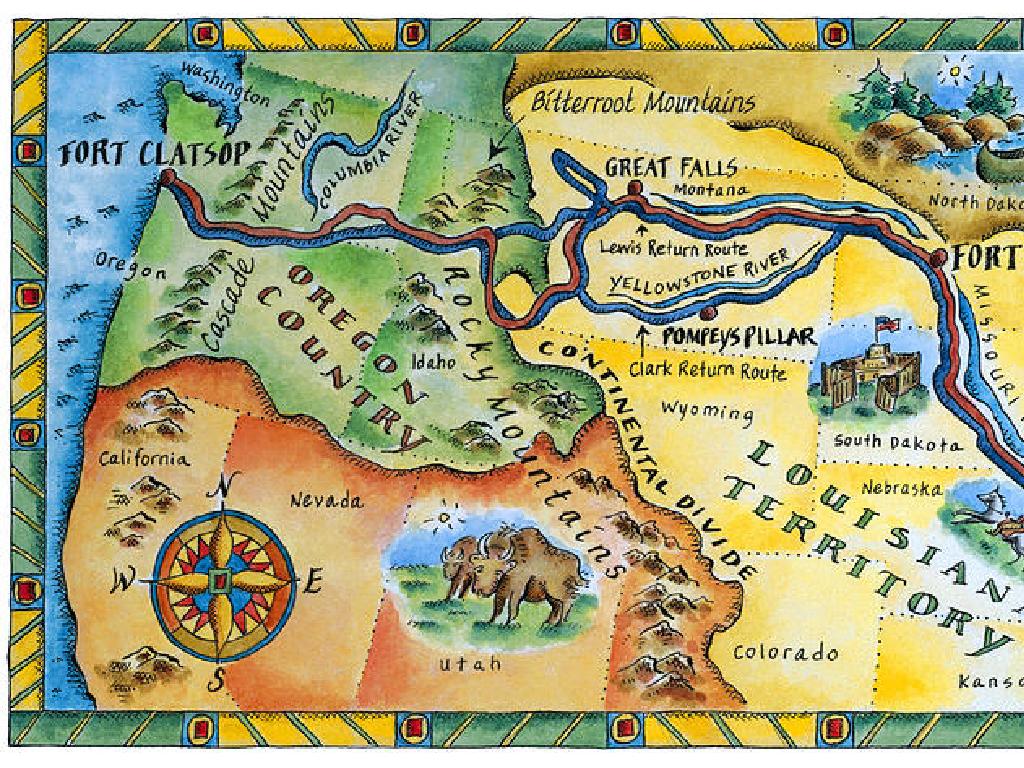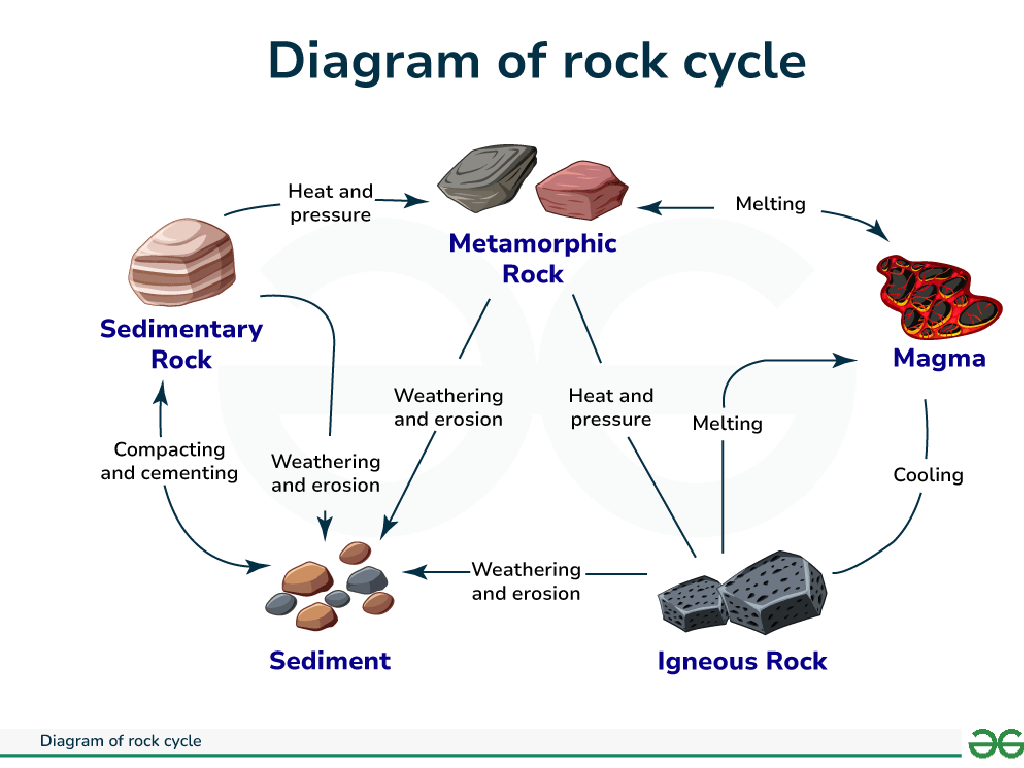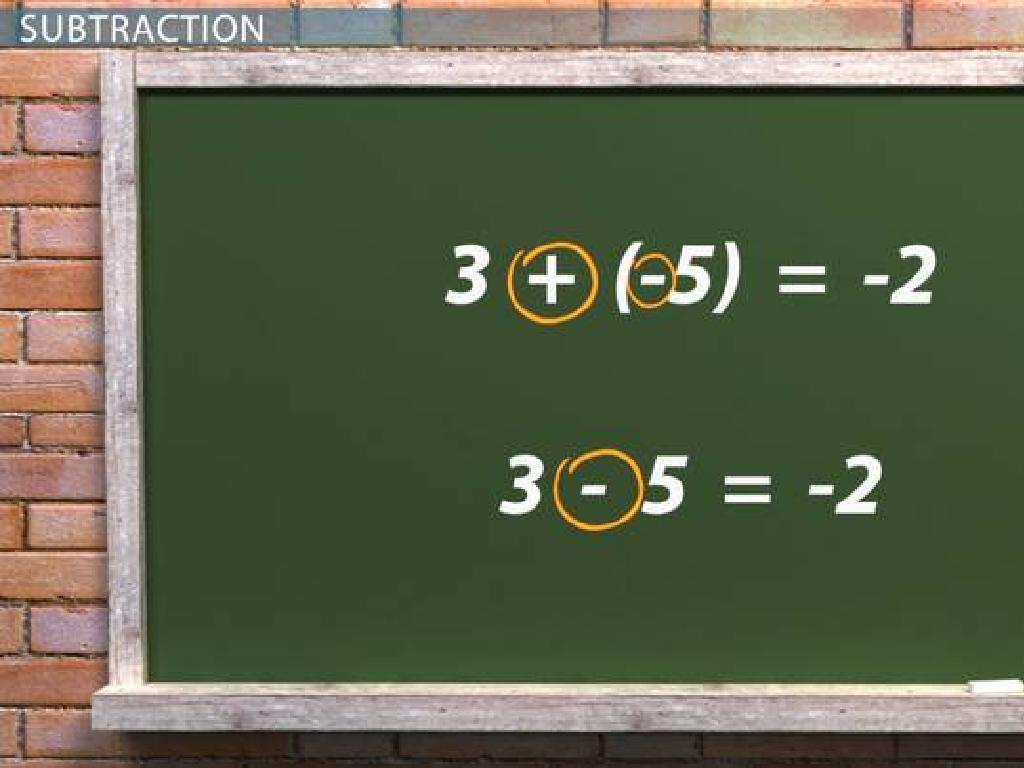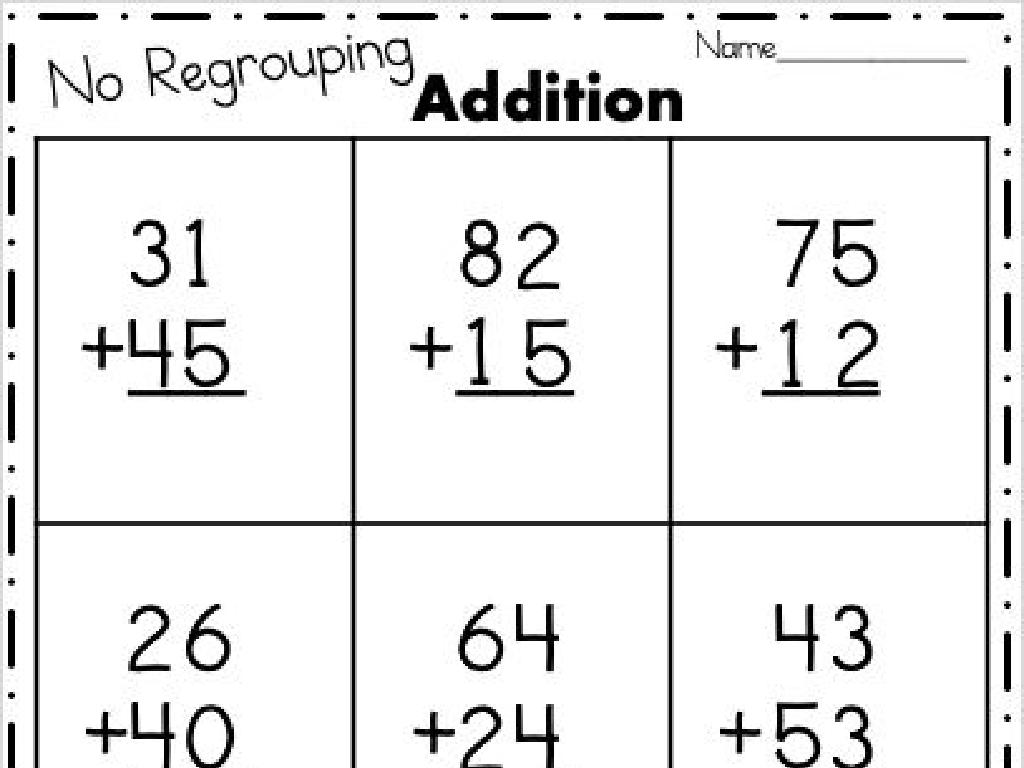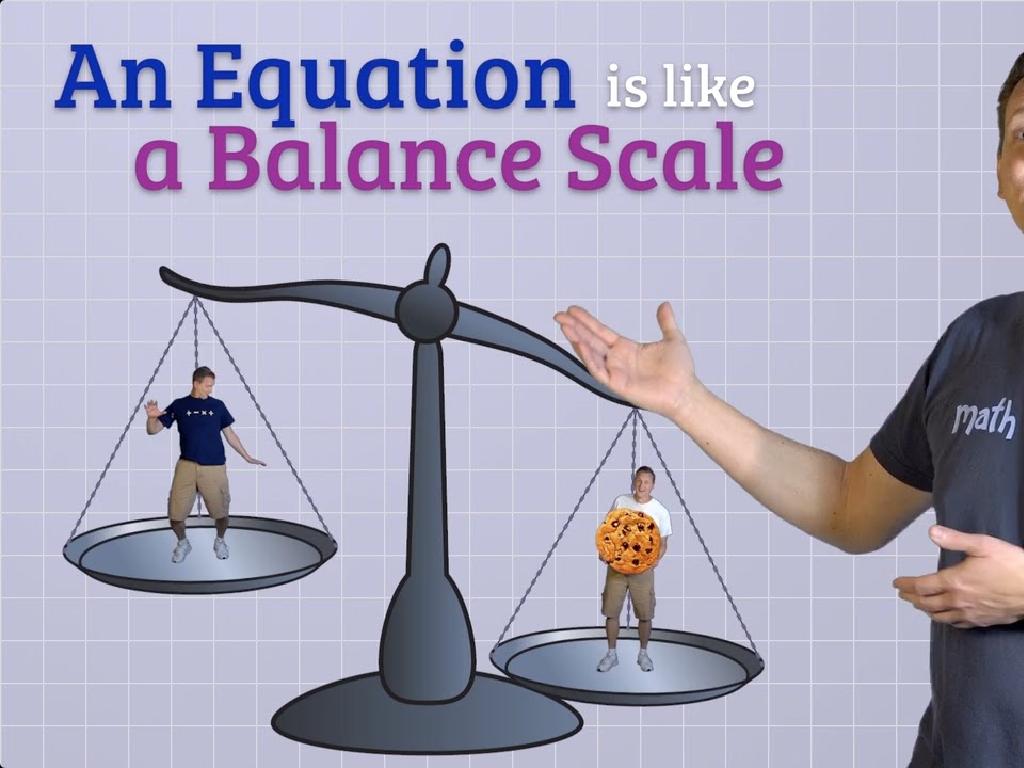How Does Particle Motion Affect Gas Pressure?
Subject: Science
Grade: Seventh grade
Topic: Particle Motion And Energy
Please LOG IN to download the presentation. Access is available to registered users only.
View More Content
Particle Motion and Energy: Gas Pressure
– Particles in gases are always moving
– Imagine tiny balls in constant, random motion
– Faster motion means higher pressure
– When particles move faster, they hit walls more often, increasing pressure
– Temperature affects particle speed
– Heating a gas makes particles speed up, which raises pressure
– More particles in a space increase pressure
– In a balloon, adding more air makes it harder to squeeze
|
This slide introduces the concept of particle motion in gases and its relation to gas pressure, a fundamental topic in understanding the behavior of gases. Emphasize that particles are in constant, random motion and that this motion is what causes gas pressure. Explain that the speed of the particles is influenced by temperature, with higher temperatures leading to faster particles and thus higher pressure. Also, discuss how adding more particles into a given volume, like inflating a balloon, increases the pressure. Use analogies and simple experiments, such as heating a balloon to show increased pressure, to make these abstract concepts more tangible for seventh graders.
Exploring States of Matter: Focus on Gas
– Matter: The building block of everything
– Matter’s three states: Solid, Liquid, Gas
– Today’s focus: Gaseous state
– How gas particles move and create pressure
– Particles in gas move freely and rapidly, colliding with container walls, generating pressure
|
Begin the lesson by explaining that all physical objects are composed of matter. Matter can exist in three fundamental states: solid, liquid, and gas. Emphasize the characteristics of each state, focusing on the gaseous state for this lesson. Explain that in gases, particles move quickly and are far apart, which is different from solids and liquids. Discuss how the rapid, random motion of gas particles causes them to collide with the walls of their container, and how these collisions result in the pressure we can measure. Use real-life examples like a balloon expanding or a tire being inflated to illustrate the concept. This will set the stage for understanding the relationship between particle motion and gas pressure.
Particle Motion in Gases
– Gas particles are in constant motion
– Imagine tiny balls bouncing in all directions with energy
– Particles move freely at high speeds
– Unlike solids or liquids, gas particles have no fixed shape and spread out
– Visualizing particle behavior
– Use animations or simulations to see how gas particles move
– Motion affects gas pressure
– Faster movement means more collisions, increasing pressure
|
This slide introduces the concept of particle motion in gases and its effect on gas pressure. Emphasize that gas particles are always moving and possess energy, which is a key difference from solids and liquids. Explain that the freedom of movement and the speed at which these particles travel contribute to the behavior of gases. Use visual aids like animations to help students grasp how particles in a gas move and interact. Highlight that the increased movement results in more collisions with the walls of the container, which in turn increases the pressure of the gas. This foundational understanding will help students as they explore more complex topics in gas behavior and thermodynamics.
Understanding Gas Pressure
– Gas pressure: force by particles
– Particles hitting container walls exert force, which we feel as pressure
– Created by collisions in container
– When gas particles collide with container walls, pressure is generated
– More collisions increase pressure
– Frequent collisions of particles with walls lead to higher gas pressure
– Measuring pressure in science
|
Gas pressure is a fundamental concept in understanding how gases behave. It’s the result of countless tiny particles that are constantly moving and bumping into the walls of their container. Each collision exerts a small force on the wall, and the sum of these forces over the entire surface is what we measure as pressure. The more particles you have moving and colliding in a space, or the faster they move, the higher the pressure will be. This slide will help students visualize the microscopic events that lead to the macroscopic phenomenon of gas pressure. In class, consider conducting experiments to demonstrate how changing the volume of a gas affects pressure, or how heating a gas increases particle motion and pressure.
Factors Affecting Gas Pressure
– Temperature and pressure relationship
– Higher temperatures cause particles to move faster, increasing collisions and pressure.
– Volume’s impact on gas pressure
– Reducing volume forces particles closer, causing more collisions and raising pressure.
– Particle number influences pressure
– More particles in a space increase collision frequency, thus increasing pressure.
|
This slide aims to explain the relationship between particle motion and gas pressure. Emphasize that temperature is a measure of particle kinetic energy; when temperature increases, particles move faster and collide more often, leading to higher pressure. Discuss how volume affects pressure by using the example of a balloon; when the volume of the balloon decreases, the air particles inside collide more frequently, increasing pressure. Lastly, explain that adding more particles into a fixed volume, like inflating a tire, increases the number of collisions and therefore the pressure. Use animations or simulations if possible to visually demonstrate these concepts. Encourage students to think of real-life examples where these factors play a role, such as in weather balloons or car tires.
Real-Life Example: How Balloons Illustrate Gas Pressure
– Balloon inflation due to particle collisions
– Air particles hit the balloon’s inner surface, causing it to inflate.
– Heating a balloon causes expansion
– Warmer temperatures increase particle speed, making the balloon bigger.
– Predict: A balloon in the freezer
– Will cooler temperatures make the particles slow down and the balloon shrink?
– Understanding pressure changes
|
This slide uses the familiar example of balloons to demonstrate how particle motion affects gas pressure. When a balloon is inflated, air particles inside collide with the balloon’s walls, creating pressure that causes the balloon to expand. Heating the balloon increases the energy of the particles, causing them to move faster and collide more forcefully, leading to expansion. Conversely, placing a balloon in the freezer slows down the particles, potentially causing the balloon to contract. Encourage students to think critically and make predictions about the balloon’s behavior in the freezer. This example helps students visualize the abstract concept of particle motion and its direct impact on gas pressure.
Boyle’s Law: Understanding Pressure and Volume
– Boyle’s Law relationship
– Describes how pressure and volume are inversely related in a gas
– Volume down, pressure up
– When the volume of a gas is compressed, the pressure it exerts increases
– Temperature remains constant
– Syringe demo illustration
– Observe how changing the volume inside a syringe affects the pressure
|
Boyle’s Law is a fundamental principle in understanding gas behavior, especially how pressure and volume interact. It’s crucial to emphasize that this relationship is inverse and only applies when the temperature is constant. For the syringe demonstration, prepare a syringe with a tightly sealed nozzle. Show how compressing the syringe increases pressure by making it harder to push the plunger. Conversely, pulling the plunger back increases volume and decreases pressure. This visual and hands-on demonstration will help students grasp the concept more concretely. Discuss real-life applications such as breathing and how our lungs work like a syringe when we inhale and exhale.
Charles’s Law: Pressure-Temperature Relationship
– Gas pressure increases with temperature
– Constant volume: heat raises pressure
Heating a gas makes particles move faster, hitting the container’s walls more often, which raises pressure.
– Experiment: sealed flask in hot water
We’ll observe how a flask’s gas pressure changes when placed in hot water.
– Understanding Charles’s Law
Charles’s Law helps predict how gas will behave when it’s heated or cooled.
|
Charles’s Law is a fundamental principle in understanding gas behavior, specifically how gas pressure is directly proportional to its temperature when volume is held constant. This slide introduces the concept and sets up a class experiment to visualize the law in action. By heating a sealed flask in a hot water bath, students will be able to observe the increase in pressure firsthand. It’s crucial to explain that as the gas particles gain energy from heat, they move faster and collide with the container’s walls more frequently and with greater force, causing an increase in pressure. This experiment will reinforce the theoretical understanding of Charles’s Law and its practical implications in everyday life, such as in weather balloons and car tires.
Class Activity: Marshmallow Experiment
– Place marshmallows in a vacuum chamber
– Observe changes as air is removed
– Watch for expansion or shrinkage
– Discuss particle motion effects
– How does reduced air affect particles?
– Relate observations to gas pressure
– Understand how pressure changes with particle motion
|
This hands-on activity is designed to help students visualize the relationship between particle motion and gas pressure. By placing marshmallows in a vacuum chamber, students will be able to observe the physical changes that occur as the air is removed. As the marshmallows expand or shrink, discuss the kinetic theory of gases and how the reduction of air (and thus particle collisions) in the chamber affects the pressure exerted by the gas. Encourage students to think about how the particles inside the marshmallow are behaving. Possible variations of the activity could include using different materials or changing the rate at which air is removed to observe different effects. This will help students grasp the concept that gas pressure is directly related to the motion and number of particles in a given volume.
Conclusion: Particle Motion and Gas Pressure
– Gas particles move randomly and energetically
– Collisions cause gas pressure
– Particles hit the walls of their container, creating pressure
– Temperature affects pressure
– Higher temperatures increase particle speed, thus more collisions
– Volume and particle number impact pressure
– Changing container size or particle amount changes the pressure
|
As we wrap up, remember that the random and energetic motion of gas particles is responsible for the pressure we observe in gases. This pressure is the result of countless collisions between the gas particles and the walls of their container. Factors such as temperature, volume, and the number of particles play a crucial role in determining the pressure of a gas. A higher temperature leads to faster-moving particles, which collide more frequently and with greater force, increasing pressure. Conversely, increasing the volume allows particles more space to move, which can decrease pressure. Similarly, adding more particles to a fixed volume increases the number of collisions, thus increasing the pressure. Use this slide to review these concepts and ensure students understand the relationship between particle motion and gas pressure.
Homework: Exploring Gas Laws
– Complete Boyle’s & Charles’s Laws worksheet
– Find everyday examples of gas pressure
– E.g., inflating a balloon or a basketball
– Reflect on how particle motion affects pressure
– Consider how temperature and volume changes impact pressure
– Prepare for class discussion
|
For homework, students are tasked with completing a worksheet that explores Boyle’s Law, which relates pressure and volume, and Charles’s Law, which connects volume and temperature. They should also observe real-life instances where gas pressure is evident, such as in inflating objects or weather phenomena. Encourage them to think critically about how the motion and energy of particles affect gas pressure in these examples. In the next class, students will discuss their observations and findings, allowing them to apply theoretical knowledge to practical situations and deepen their understanding of the topic.

